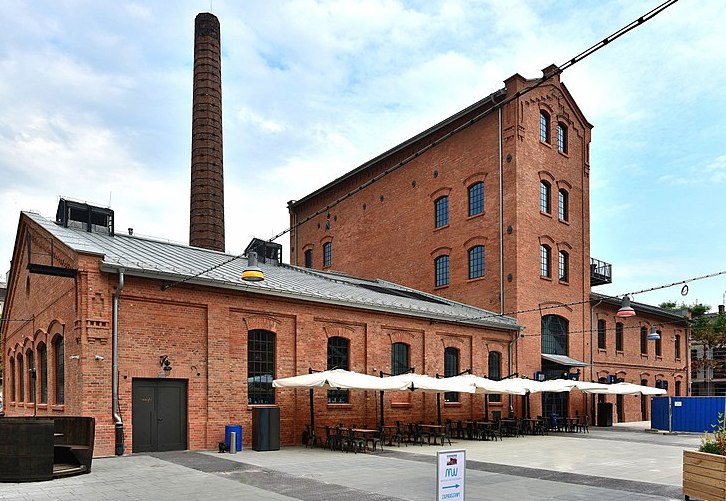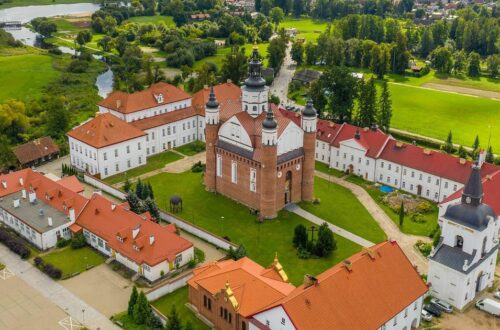Wisloujscie Fortress In Gdansk
The unusual location and over a thousand years of history make Gdańsk a naturally fortified area. Hence Gdańsk is a place linked with a national defense strategy. The most interesting preserved military monument of Gdańsk is Fortress Wisloujscie.
The Wisłoujście Fortress is a remarkable monument of fortification art. This place was an area of strategic importance, from where it was possible to control the movement of ships leaving and entering the port of Gdansk. It is also a great example of the development of the fortification art of Northern Europe over more than four centuries.
History
The first wooden stronghold was built there in the 14th century. When Gdańsk received the right to control all units moving in the lower mouth of the Vistula, the importance of the facility increased significantly.
Unfortunately, the unusually strong storm that started in the Baltic around 1465 completely destroyed this first fortification. Defensive capabilities, the economic and military values of this place were recognized.
Then in 1482, a brick tower was erected, which on the one hand, became one of the first lighthouses, and on the other continued to have watchdog functions.
The tower itself was not a sufficient defense structure, so during the Polish-Teutonic war in 1519-21, wooden fortifications were built around the Lighthouse. Around this core, over the next decades, individual defensive structures grew, which made up the entire fortification of Wisłoujście.
In the XVI century, and especially its end, was a period of the rapid development of firearms, an increase in the force destroying the guns. Thus the modernization of fortifications and the emergence of new defense systems had to be done. In Gdańsk, it was realized relatively early that these costly but necessary works for the city’s security had to be undertaken.
In the 80s of the sixteenth century, and especially its end a four-bastion Fort Carré was built around the Wreath in the place of wooden fortifications, created according to the principles of New Italian fortifications. The walls of the bastions were made of brick, and the corners were reinforced with stones.
In the years 1657-58, there was a combination of a single defense system of the fortress fortifications and the city’s defense system. During the Prussian and Napoleonic Wars (1793-1914), the ramparts of the Fortress were further modernized.
After World War I, the Fortress lost its defensive significance and was used as a symbol of the greatness of the Gdansk. This was due to the restrictions of the Versailles Treaty, which ordered the demilitarization of Gdańsk and its surroundings. Therefore, the area around the Fortress was handed over to sailing clubs.
In March 1945, as a result of the Soviet artillery attack, the Lighthouse, part of the Wreath, roofs of officer’s houses, and the highest part of barracks were partially destroyed.
After the war, the area around the Fortress fell into ruin. However, in the second half of the 1950s, the object was rebuilt. Later in 1959, the entire complex was protected by law, and in 1974 the Historical Museum of the City of Gdańsk incorporated the Fortress and systematically carried out the process of monument restoration and makes it available to tourists.
Finally, tourists and military enthusiasts can admire the extraordinary beauty of the Wisloujscie fortress.
Visiting Fortress
Today Fortress is one of the most visited buildings in Gdańsk; several times a year, historical re-enactments are organized here.
If you are in the Tri-City and go to Westerplatte, it is worth turning slightly earlier – to the Wisłoujście Fortress. You certainly won’t regret it!
The tour takes place with a guide, and for a regular ticket, we will pay PLN 15 (approx. An hour walk). The guide will tell about the history of Wisłoujście’s Fortress. The tour leads around buildings and casemate rooms. You can also climb the tower from where there is a fantastic view of the port and other districts of Gdansk. There is also a small museum and gift shop in the Fortress.
The exposed brick room of the Fortress has its occupant- bats, which eagerly spend winter hibernation in the Wisłoujście Fortress. For that reason, under the protection requirements of the Natura 2000, the tourist season at the Wisłoujście Fortress lasts from May 1 to the end of September.
To visit the rare work of modern fortification art, you had to get there by taxi, private car, or use the bus line 106, starting from the Music Academy on Łąkowa Street.
The more attractive way to get there is water tram F5, departing from the Fish Market.





